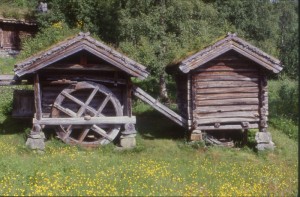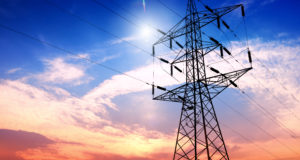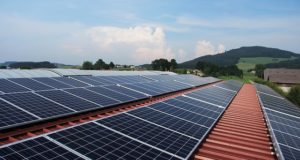It is hardly surprising that off-the-gridders and preppers would be intensely interested in the possibilities offered by alternative energy. Self-sufficiency and independence on a small and manageable scale are the goals of those who are making the effort to live outside the mainstream, and methods of generating energy that harness the bountiful gifts of nature are a perfect way to live freely and in harmony with all of God’s magnificent creation.
 Most of the focus lately on alternative energies has been on wind and solar. The sun and the wind are indeed omnipresent, and while they tend to be inconsistent in their frequency of appearance, when combined with a bank of storage batteries, small solar and wind systems can help supply ample amounts of energy for those building their own personal energy mini-grids.
Most of the focus lately on alternative energies has been on wind and solar. The sun and the wind are indeed omnipresent, and while they tend to be inconsistent in their frequency of appearance, when combined with a bank of storage batteries, small solar and wind systems can help supply ample amounts of energy for those building their own personal energy mini-grids.
There is another option that most never think about, however. Most likely, that is because it never occurs to anyone that such an option even exists. But, in fact, the very same source of energy that is used at the mighty edifice called Hoover Dam, which powers the bright lights of the Vegas strip, can also be exploited by those living off the grid. Almost all of us associate hydroelectric power with raging rivers, plunging waterfalls, and massive government-funded dam projects. But as Mr. Ripley would have put it, micro-hydroelectric generators that can produce enough electricity to power homes and run home appliances do in fact exist – believe it, or not.
The Magic Power of Water: Harvesting the River Wild
Despite all the hype and publicity that solar and wind have gotten, hydroelectric power is easily the most successful form of alternative energy, currently meeting 16 percent of the world’s vital energy needs. One of the real advantages of hydroelectric is that while the sun and the wind shine and blow intermittently, rivers flow all the time, and unlike nuclear, with hydro no expensive process is required to release the available energy from a separate source. Everything that can be said about large-scale hydroelectric certainly goes double for the home version, and it is the technology’s reliability and ease of access to its power source that makes micro-hydro generation a great selection for off-the-gridders looking to install a renewable energy system – if there is a river, stream, or creek nearby from which water can be safely and harmlessly diverted.
A micro-hydroelectric system is relatively simple. A miniature version of what can be found at Hoover Dam or Niagara Falls, a home hydroelectric set-up will consist of pipes to carry water, a generator with a rotating turbine and blades, an inverter, and an electric transmission and control system to carry the power produced to where it can be used to provide energy.
The two principles that determine how much hydroelectric system can produce are flow and head. Flow measures the amount of water available to turn the generator turbine or water wheel, and it is measured by the cubic feet of water that flows over the generator each second. Head measures the force with which the water hits turbine blades, independent of the amount that is passing by. The entrance end of the water pipe will always be elevated above the exiting end, allowing gravity to determine the intensity of the head based on the angle of elevation and the length of the pipe, while the size of the pipe used to divert water from its original source will determine the amount of flow. Flow and head working together will determine the quantity of the electricity produced by a particular system, with most existing micro-generators capable of delivering about 1 kWh (1,000 watt-hours) of electricity per day on average. There is variance here, and some of the better (and more expensive) micro-generators can produce up to 30 kWh every 24 hours, which is about double the amount of energy used by a typical (and typically inefficient) American household in a day.
The two primary types of generators sold (there are other types as well) are reaction turbines, which are submerged underwater and function well with high flow and low head, and impulse turbines that are placed above the water and are built to work with high head and a low flow. Micro-hydro system sellers can handle installation of the products they sell, and they will be able to determine which type of system would be most appropriate for a particular homestead.
For generators that are able to produce between one and ten kWh per day, costs for the entire system can range anywhere from $5,000 to $60, 000 in total, so it seems clear that for most households a smaller system would be the only reasonable choice.
The Lifestyle of Less is More
While this might seem like a lot for a relatively small output, the beauty of off-the-grid living is that increases in efficiency allow those choosing this lifestyle to use considerably less energy than the average. With most micro-hydro systems, it is not really possible to run more than one appliance at a time, with the exception of the refrigerator; but while this might seem like a horrible inconvenience to the typical American consumer, for off-the-gridders learning how to live on a smaller scale and learning to make do with less, this usually poses no problems whatsoever.
Even for those living the simplest kind of life, a micro-hydro system alone might not provide enough power, obviously. But preppers and others living the independent life are masters at cleverly combining various small-scale technologies to create highly functional interdependent networks – in the case of energy, for example, a typical off-the-grid homestead might have some solar panels, a homemade solar thermal system, a good wood stove, large windows on the south side of the house to absorb sunlight, and a bicycle generator connected to a storage battery bank. And of course, if they are fortunate enough to live near a source of running water that can be tapped into without adversely affecting those living downstream, that independent network could also include a micro-hydroelectric generator. If this technology can meet 16 percent of the world’s energy requirements, then there is no reason it should not eventually become a significant source of power for off-the-grid homesteads and prepper communities across the nation.
©2011 Off the Grid News
 Off The Grid News Better Ideas For Off The Grid Living
Off The Grid News Better Ideas For Off The Grid Living



